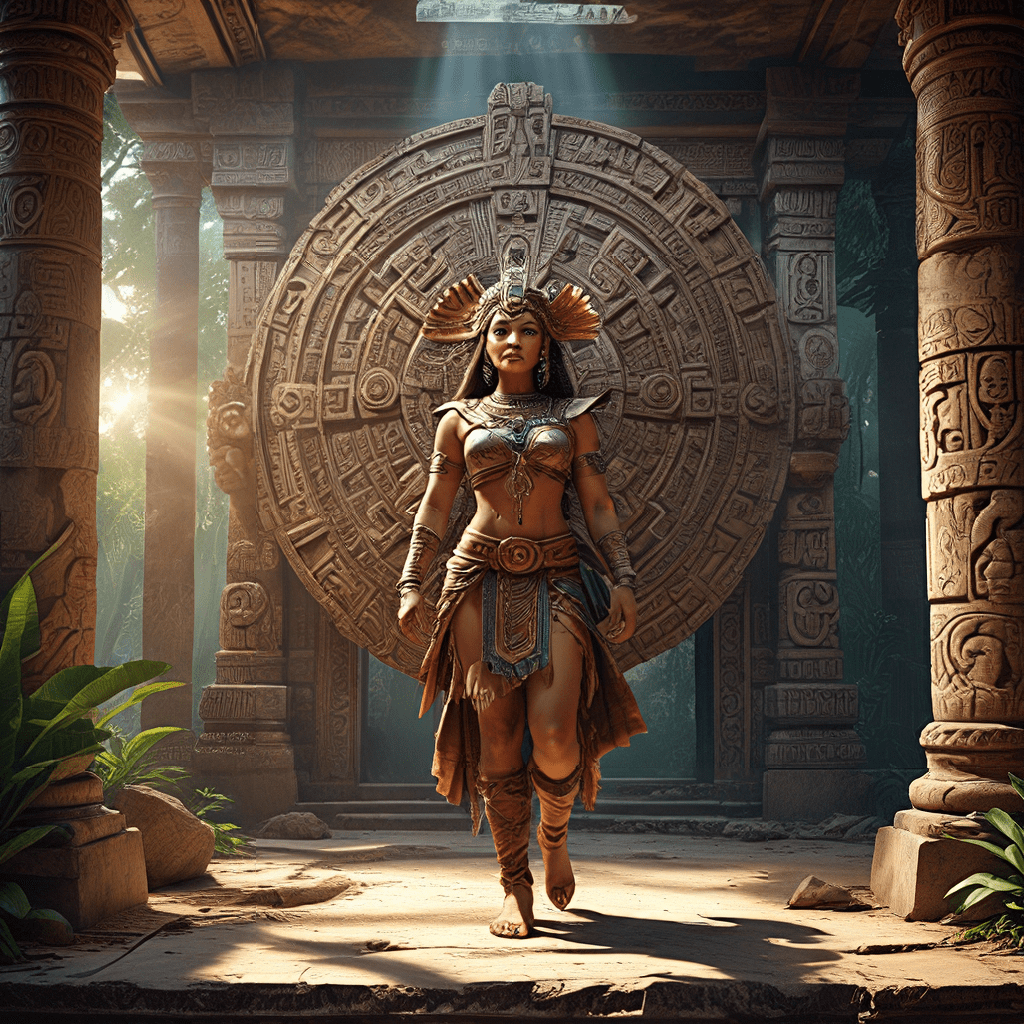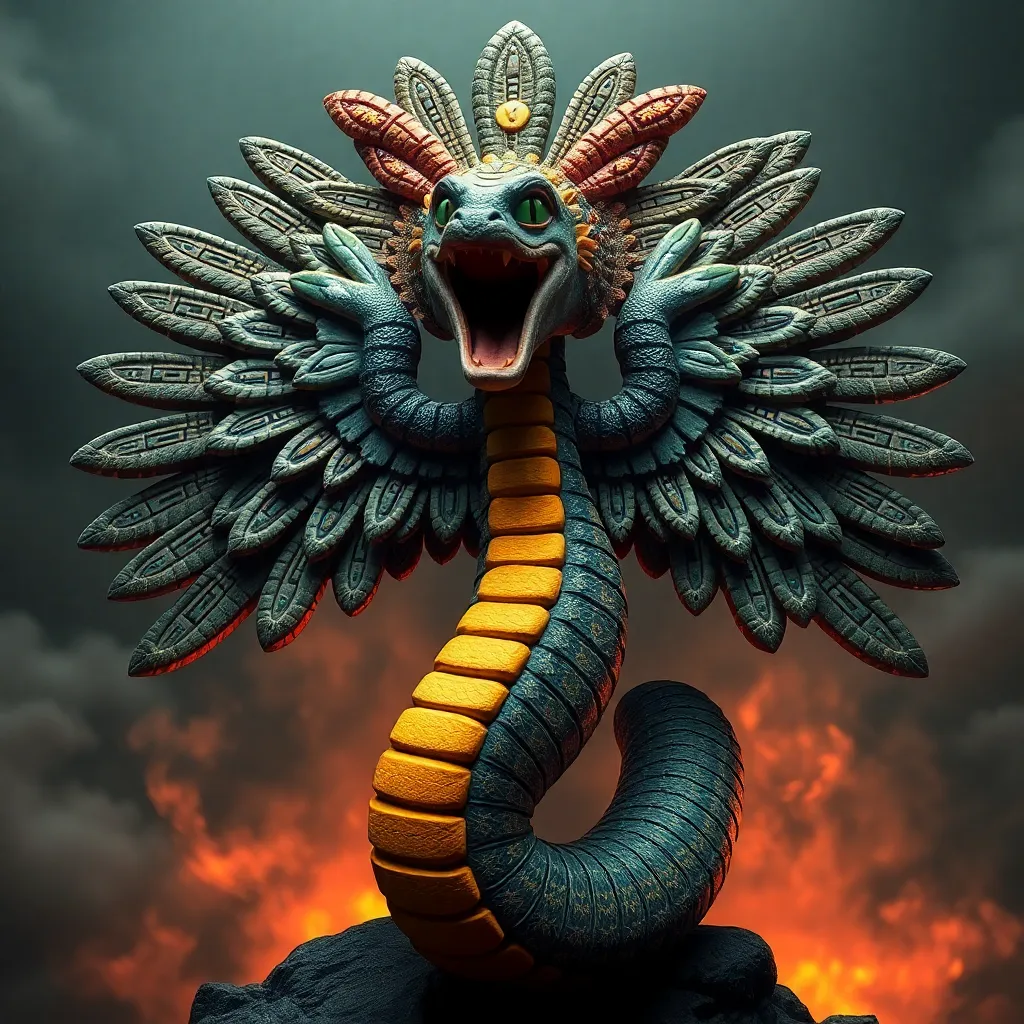1. Introduction: Unveiling the Transformative Power of Mayan Symbols
The ancient Maya civilization, renowned for its intricate calendar system, sophisticated mathematics, and awe-inspiring architecture, also held a profound understanding of the transformative power of symbols. These symbols, deeply embedded within their mythology, served not only as visual representations of their beliefs but also as potent tools for navigating the complexities of life and death, change and renewal. In this exploration, we delve into the rich tapestry of Mayan mythology, unveiling the symbolism that underscores their enduring fascination with transformation and its profound implications for our own lives.
2. The Ever-Shifting Landscape of Mayan Mythology
Mayan mythology is a kaleidoscope of vibrant imagery and complex narratives, woven together by a deep-seated belief in the interconnectedness of all things. This intricate web of myths and legends, passed down through generations, offers invaluable insights into the Mayan worldview, where transformation was not merely a concept but a lived experience. The Maya believed in a cyclical understanding of time, where periods of creation and destruction alternated, mirroring the constant flux of the natural world. This cyclical nature instilled a profound appreciation for change, viewing it not as an end but as a necessary step towards renewal and rebirth.
3. Embracing Transformation: A Central Theme in Mayan Belief
Transformation lies at the heart of Mayan mythology, permeating its narratives and rituals. The Maya believed that transformation was not merely an external event but an inner journey, a process of shedding old patterns and embracing new possibilities. This belief manifested in various aspects of their lives, from their agricultural practices to their elaborate rituals, emphasizing the interconnectedness of the individual and the cosmos.
4. Unveiling the Symbolic Language: Keys to Understanding
To fully comprehend the transformative power of Mayan symbols, it is essential to understand their symbolic language. The Maya employed a rich array of symbols, each carrying specific meanings and embodying profound truths. From celestial bodies and natural elements to mythical creatures and deities, each symbol served as a key to unlocking deeper layers of understanding. By deciphering these symbols, we gain access to the wisdom and insights that the ancient Maya sought to convey through their mythology.
5. The Serpent's Shedding: Embracing Change and Rebirth
The serpent, a prominent symbol in Mayan mythology, embodies the concept of transformation and renewal. Its ability to shed its skin symbolizes the shedding of old patterns and limitations, paving the way for growth and rebirth. The serpent is often depicted alongside deities associated with transformation, further emphasizing its role as a catalyst for change. Through the serpent's symbolic journey, the Maya conveyed the importance of embracing change as an essential aspect of personal and cosmic evolution.
6. The Life-Giving Maize: Nourishment and Renewal
Maize, the cornerstone of Mayan agriculture and sustenance, held profound symbolic significance in their understanding of transformation and renewal. Revered as a gift from the gods, maize represented the cyclical nature of life, death, and rebirth. The sprouting of the maize plant from the earth symbolized the emergence of new life from the darkness of the underworld. Its growth and eventual harvest mirrored the cycle of human life, from birth to death and the potential for renewal in the afterlife. The Maya believed that consuming maize connected them to the divine, allowing them to participate in the ongoing cycle of creation and destruction.
7. The Sacred Ceiba Tree: Connecting Earth and Heavens
The Ceiba tree, a towering presence in the Mayan landscape, was revered as a sacred symbol of transformation and connection. Its expansive roots, reaching deep into the earth, represented the underworld and the realm of ancestors. Its towering trunk, stretching towards the heavens, symbolized the celestial realm and the abode of the gods. The Ceiba tree served as a bridge between these realms, allowing for communication and exchange between the earthly plane and the spiritual world. Through its symbolic connection, the Maya sought to navigate the complexities of life and death, finding solace and guidance in the interconnectedness of all things.
8. The Journey of the Hero: Overcoming Obstacles and Evolving
The hero's journey, a recurring theme in Mayan mythology, embodies the transformative power of overcoming challenges and evolving through adversity. These tales often depict individuals venturing into the unknown, facing trials and tribulations, and ultimately emerging victorious, transformed by their experiences. The hero's journey serves as a metaphor for the personal transformation that each individual undergoes throughout their life. By facing challenges, overcoming obstacles, and learning from their experiences, individuals can evolve into their best selves, achieving a state of enlightenment and spiritual growth.
9. Deities of Transformation: Guiding Forces in the Cycle of Change
The Mayan pantheon is populated by a diverse array of deities, each embodying specific aspects of transformation and renewal. Itzamna, the creator god, represents the power of creation and the initiation of new cycles. Ix Chel, the goddess of fertility and childbirth, symbolizes the ongoing cycle of life and death. Chac, the rain god, embodies the transformative power of water, bringing life and sustenance to the land. These deities served as guiding forces in the cycle of change, offering comfort and guidance to the Maya as they navigated the complexities of life and death.
10. The Enduring Legacy: Applying Mayan Symbols in the Modern World
The transformative power of Mayan symbols continues to resonate in the modern world, offering valuable insights into navigating the challenges and opportunities of personal and societal change. By understanding the symbolism embedded within Mayan mythology, we can gain a deeper appreciation for the cyclical nature of life, the importance of embracing change, and the potential for renewal within ourselves and the world around us. These ancient symbols serve as timeless reminders of our interconnectedness with the cosmos and the transformative power that lies within each of us.
FAQ
What are the key principles of Mayan transformation?
The key principles of Mayan transformation include embracing change, understanding the cyclical nature of life, seeking renewal, and connecting with the divine.
How can Mayan symbols be applied in the modern world?
Mayan symbols can be applied in the modern world by using them as a source of inspiration for personal growth, understanding the interconnectedness of all things, and navigating the challenges and opportunities of change.
What are the most important lessons we can learn from Mayan mythology about transformation?
The most important lessons we can learn from Mayan mythology about transformation are the importance of embracing change, understanding the cyclical nature of life, seeking renewal, and connecting with the divine.




